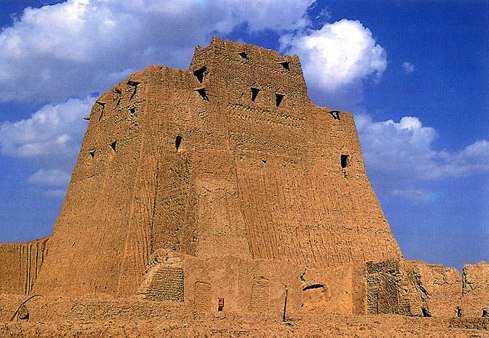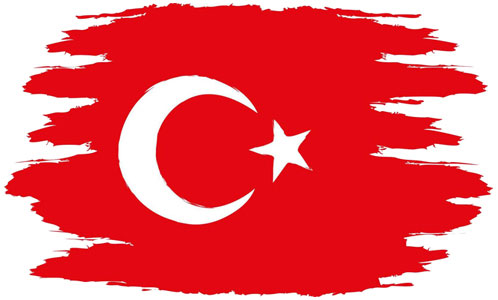Exploring its Cultural, Literary, Artistic, Social, Economic, Geographical, and Historical Significance within the Context of Iran's Great Civilization
Sistan and Baluchistan, located in southeastern Iran, is one of the country's lesser-known provinces, but it has
a rich history and culture that has remained largely unexplored. This region is home to several unique historical and cultural sites, including
the ancient city of Zabol, the Chabahar Port, and the Lut Desert. In this blog post, we will be exploring Sistan and Baluchistan's cultural, literary, artistic, social, economic, geographical, and historical significance within the context of Iran's great civilization. We will delve into the province's unique history, examining its cultural heritage, art, literature, and architecture. We will also take a closer look at the economics and social structures of the region, as well as its strategic position in the map of Iran. So, sit back, relax, and get ready to explore one of Iran's most enigmatic
and fascinating provinces.
1. Introduction to Sistan and Baluchistan: A hidden gem in Iran
Nestled in the southeastern corner of Iran lies a hidden gem waiting to be discovered - Sistan and Baluchistan. This enchanting region, often overshadowed by the more popular tourist destinations in Iran, holds a wealth of cultural, literary, artistic, social, economic, geographical, and historical significance that is sure to captivate any curious traveler.
Sistan and Baluchistan's allure stems from its rich and diverse heritage, influenced by the convergence of various civilizations throughout history. From the ancient times of the Achaemenid Empire to the Islamic era and beyond, this region has witnessed the ebb and flow of countless cultures, leaving behind a tapestry of traditions and customs found nowhere else in the world.
The literary treasures of Sistan and Baluchistan are equally fascinating. The region has been a cradle of Persian poetry, nurturing the talents of renowned poets who have immortalized its landscapes, its people, and their stories in verse. The works of literary giants continue to inspire and resonate with readers, offering a glimpse into the soul of this enigmatic land.
Artistic expressions in Sistan and Baluchistan are as diverse as its population. From intricate handicrafts to vibrant traditional music and dance forms, the artistic heritage of the region is a testament to the creativity and ingenuity of its people. The vibrant colors, intricate designs, and skilled craftsmanship of Baluch textiles and rugs, in particular, are renowned worldwide for their beauty and cultural significance.
Beyond its cultural and artistic allure, Sistan and Baluchistan also hold significant social, economic, and geographical importance. The region's
strategic location as a crossroads connecting Iran, Afghanistan, and Pakistan has shaped its history and contributed to its vibrant trade and commerce. Its diverse landscapes, from vast deserts to lush valleys and snow-capped mountains, offer a breathtaking backdrop for adventure and exploration.
Moreover, the historical significance of Sistan and Baluchistan cannot be understated. It has been a witness to the rise and fall of empires, the footsteps of conquerors, and the resilience of its people. Exploring its ancient ruins, such as the mighty fortress of Zahedan and the awe-inspiring Shahr-e Sukhteh, provides a glimpse into the fascinating history that unfolded within these lands.
In the following sections, we will delve deeper into the various facets of Sistan and Baluchistan, unraveling its hidden treasures and shedding light on its lesser-known but remarkable contributions to Iran's great civilization. Join us on this voyage of discovery as we unravel the enigmatic Sistan and Baluchistan and reveal the secrets that lie within its borders.
2. The historical significance of Sistan and Baluchistan
Sistan and Baluchistan, located in the southeastern region of Iran, holds a rich tapestry of historical significance that stretches back centuries. This enigmatic province, often overlooked amidst the grandeur of Iran's
renowned historical sites, holds a unique charm and allure that captivates the curious traveler.
Dating back to ancient times, Sistan and Baluchistan has been a crossroads of civilizations, serving as a vital hub for trade and cultural exchange. The region has witnessed the rise and fall of empires, including the Achaemenid, Parthian, and Sassanian dynasties, each leaving its indelible mark on the landscape and shaping the historical narrative of the province.
One of the most prominent historical landmarks in Sistan and Baluchistan is the ancient city of Zabol, which dates back to the 3rd millennium BCE. This once-thriving city was a pivotal
center of commerce and intellectual pursuits, boasting an advanced irrigation system that supported its agricultural prosperity.
The province is also home to the famous Shahr-e Sukhteh, or "Burnt City," an archaeological site that offers a glimpse into the ancient civilization that flourished in the region over 5,000 years ago. This well-preserved site has yielded remarkable artifacts and insights into the social, economic, and cultural aspects of the time.
Furthermore, Sistan and Baluchistan played a significant role in the spread of Islam during the 7th century. The region became a pivotal point for the expansion of Islamic influence, with many historical mosques and shrines serving as testaments to its religious heritage.
The historical significance of Sistan and Baluchistan extends beyond its architectural wonders. It is a region deeply intertwined with the literary and artistic traditions of Iran. The province has been a source of inspiration for poets, musicians, and storytellers, who have woven tales of love, heroism, and the struggle for freedom against the backdrop of its diverse landscapes.
From the arid deserts to the majestic mountain ranges, Sistan and Baluchistan's geographical features have shaped its history and contributed to its distinct cultural identity. Its strategic position along the ancient Silk Road has fostered a rich tapestry of cultural exchange, resulting in a fusion of traditions and customs that make the region truly unique.
In conclusion, the historical significance of Sistan and Baluchistan is a testament to the enduring legacy of Iran's great civilization. Exploring the province's cultural, literary, artistic, social, economic, geographical, and historical dimensions reveals a hidden gem that demands
attention and appreciation. It is a place where the echoes of the past reverberate through time, inviting intrepid travelers to unravel its enigmatic allure.

Sistan and Baluchistan is like embarking on a journey through time
3. Uncovering the cultural heritage of Sistan and Baluchistan
Sistan and Baluchistan, a region shrouded in mystery and allure, holds a rich and diverse cultural heritage that beckons to be uncovered. Nestled in the southeastern corner of Iran, this captivating province offers a captivating tapestry of traditions, artistry, literature, social dynamics, economic endeavors, geographical wonders, and historical significance.
Exploring
the cultural heritage of Sistan and Baluchistan is like embarking on a journey through time, where ancient civilizations have left their indelible marks. From the ancient city of Shahr-e Sukhteh, also known as the "Burnt City," to the awe-inspiring Zabol's historic bridge, this region is a treasure trove of archaeological wonders.
Delving into the literary world of Sistan and Baluchistan reveals a vibrant tapestry of storytelling and poetic expression. The region has been a cradle of literary giants, producing renowned poets, scholars, and writers whose works have echoed through the ages. Their words encapsulate the essence of the region's cultural identity, reflecting the traditions, customs, and aspirations of its people.
The artistic landscape of Sistan and Baluchistan is a canvas painted with intricate designs, vibrant colors, and masterful craftsmanship. Traditional arts such as carpet weaving, pottery, and woodwork flourish here, showcasing the skills passed down through generations. Each art form weaves a narrative of cultural pride and artistic excellence, reflecting the unique identity of the region.
The social fabric of Sistan and Baluchistan is woven with threads of hospitality, kinship, and community spirit. The people here embody a warmth and generosity that is deeply ingrained in their cultural heritage. This vibrant social tapestry is intertwined with age-old customs, rituals, and celebrations, creating a harmonious blend of tradition and modernity.
Economically, Sistan and Baluchistan plays a vital role in Iran's economic landscape. Its strategic location at the crossroads of trade routes has made it a hub for commercial activities. The region's bustling markets, such as the Zahedan Bazaar, offer a glimpse into the vibrant economic life that sustains the local communities.
Geographically, Sistan and Baluchistan is a land of contrasts. From vast deserts, such as the Dasht-e Lut, to
the breathtaking beauty of the Chabahar coastline, this region showcases nature's remarkable diversity. Its geographical features have shaped the lives of its inhabitants, influencing their livelihoods and fostering a deep connection with the land.
Finally, the historical significance of Sistan and Baluchistan cannot be understated. The region has been a witness to the rise and fall
of ancient civilizations, the passage of conquerors, and the ebb and flow of empires. Its historical sites, such as the fortress of Bampur and the ancient city of Jiroft, offer a glimpse into the storied past that has shaped this enigmatic land.
Uncovering the cultural heritage of Sistan and Baluchistan is a journey of discovery, where each step unravels layers of history, art, literature, social dynamics, economics, geography, and cultural significance. It is an invitation to delve into the depths of Iran's great civilization and appreciate the richness and diversity that lies within this captivating region.
4. Exploring the literary traditions of Sistan and Baluchistan
Sistan and Baluchistan, a region shrouded in mystery and beauty, has a rich and vibrant literary tradition that deserves to be unveiled and celebrated. Nestled in the southeastern part of Iran, this region has been a melting pot of cultural exchange and artistic expression for centuries.
The literary traditions of Sistan and Baluchistan are deeply rooted in the region's diverse history and geographical landscape. Influenced by Persian, Arabic, and Balochi languages, the literature of this region reflects a unique blend of different cultural influences.
One of the
most prominent literary figures from Sistan and Baluchistan is Shah Abdul Latif Bhittai, a revered Sufi poet and philosopher. His works, written in Sindhi language, are considered a cornerstone of Sindhi literature and have had a profound impact on the literary landscape of the entire region.
The oral storytelling tradition is also a significant aspect of the literary heritage in Sistan and Baluchistan. Passed down through generations, these stories showcase the rich folklore, myths, and legends of the region. They provide a glimpse into the cultural fabric of the communities living here and offer valuable insights into their way of life, beliefs, and values.
Moreover, the literary traditions of Sistan and Baluchistan extend beyond poetry and storytelling. The region has produced notable writers, scholars, and intellectuals who have contributed to various fields of literature, including prose, drama, and non-fiction. Their works delve into diverse themes such as love, nature,
spirituality, social issues, and historical events, providing a multifaceted understanding of the region's cultural tapestry.
Exploring the literary traditions of Sistan and Baluchistan not only offers a deeper understanding of the region's cultural heritage but also sheds light on its place within the broader context of Iran's great civilization. It provides a window into the artistic and intellectual richness that has thrived in this region for centuries, making it an essential part of Iran's diverse literary landscape.
As we delve into the literary treasures of Sistan and Baluchistan, we embark on a journey that unravels the enigmatic layers of this region, uncovering its hidden gems and showcasing the profound impact it has had on the cultural, social, and historical tapestry of Iran. From ancient epics to
modern works of literature, the literary traditions of Sistan and Baluchistan stand as a testament to the enduring power of words and their ability to transcend time and connect people across generations.
5. The artistic expressions of Sistan and Baluchistan
The region of Sistan and Baluchistan in Iran is a treasure trove of artistic expressions that reflect the rich cultural heritage of the area. From traditional crafts to contemporary artwork, this region boasts a vibrant artistic scene that captivates both locals and visitors alike.
One of the most prominent art forms in Sistan and Baluchistan is carpet weaving. The intricate designs and vibrant colors of the carpets produced in this region are a testament to the skill and creativity of the local artisans. Each carpet tells a unique story, with motifs and patterns inspired by the region's natural landscapes and cultural traditions.
The art of pottery is also deeply rooted in the artistic traditions of Sistan and Baluchistan. Skilled potters create exquisite clay vessels, plates, and decorative objects using traditional techniques passed down through generations. The pottery of this region is known for its rustic charm and earthy tones, reflecting the close connection between the artisans and the land they inhabit.
Sistan and Baluchistan is also renowned for its traditional music and dance forms. The haunting melodies and rhythmic beats of the local music transport listeners to a different era, evoking a sense of nostalgia and cultural pride. Traditional dances, such as the "Attan," showcase the grace and elegance of the local dancers, who effortlessly synchronize their movements with the music.
In addition to these traditional art forms, Sistan and Baluchistan also embraces contemporary artistic expressions. Local artists experiment with various mediums, including painting, sculpture, and mixed media, to explore themes of identity, social issues, and the changing landscape of the region. Art galleries and cultural centers in cities like Zahedan and Chabahar provide platforms for artists to showcase their works and engage with a wider audience.
The artistic expressions of Sistan and Baluchistan not only serve as a means of creative expression but also
play a significant role in preserving and promoting the cultural heritage of the region. Through their art, the people of Sistan and Baluchistan celebrate their history, traditions, and unique way of life, ensuring that their artistic legacy continues to thrive in the modern world.

Hospitality is a significant aspect of their culture
6. Understanding the social fabric of Sistan and Baluchistan
Sistan and Baluchistan, a province in southeastern Iran, holds a captivating social fabric that is deeply rooted in its rich history and diverse cultural heritage. The province is home to the Baloch people, known for their unique traditions, customs, and way of life.
The social structure of Sistan and Baluchistan revolves around close-knit communities and extended families. The Baloch society values kinship and strong family ties, which play a crucial role in shaping their social interactions and daily lives. Hospitality is a significant aspect of their culture, with guests being warmly welcomed and treated with utmost respect.
Traditional norms and values are deeply ingrained in the social fabric of Sistan and Baluchistan. The Baloch people take pride in preserving their cultural heritage through various forms of artistic expression, such as music, dance, poetry, and handicrafts. These artistic endeavors not only serve as a means of preserving their identity but also foster a sense of unity and community spirit among the Baloch people.
The social fabric of Sistan and Baluchistan is also influenced by its geographical location and
historical significance. Situated on ancient trade routes, the province has been a melting pot of different civilizations and cultures throughout history. This amalgamation of influences has contributed to the diverse and vibrant social fabric that exists in the region today.
However, it is important to note that Sistan and Baluchistan also face various social challenges. Poverty, lack of access to education and healthcare, and limited economic opportunities are some of the issues that the province grapples with. Efforts are being made to address these challenges and uplift the social well-being of the people in Sistan and Baluchistan.
Understanding the social fabric of Sistan and Baluchistan is crucial for gaining a comprehensive insight into the province's cultural, literary, artistic, social, economic, geographical, and historical significance. It allows us to appreciate the resilience and cultural richness of the Baloch people and sheds light on the unique dynamics that shape this enigmatic region within the broader context of
Iran's great civilization.
7. The economic importance of Sistan and Baluchistan
Sistan and Baluchistan, a region shrouded in mystery and allure, holds not only cultural, literary, artistic, social, geographical, and historical significance but also a remarkable economic importance within the context of Iran's great civilization.
This vast region, located in southeastern Iran, is blessed with abundant natural resources that have played a crucial role in shaping its economic landscape. Sistan and Baluchistan is home to vast reserves of natural gas, oil, coal, and minerals, making it a treasure trove of valuable resources. These
resources have attracted both domestic and international investment, contributing significantly to the region's economic growth.
The strategic location of Sistan and Baluchistan, serving as a gateway between Iran, Pakistan, and Afghanistan, has further enhanced its economic importance. It has become a crucial transit route for trade, connecting the landlocked Central Asian countries to the Arabian Sea. The region's well-established road networks and the development of the Chabahar Port have further facilitated trade and commerce, opening up new avenues for economic growth and regional integration.
Agriculture also plays a vital role in the economic fabric of Sistan and Baluchistan. The region benefits from a favorable climate for cultivating a variety of crops, including wheat, barley, cotton, and fruits. The fertile soils and availability of water from the Helmand and Hamun rivers have made agriculture a significant contributor
to the local economy.Furthermore, Sistan and Baluchistan is known for its vibrant handicraft industry. Skilled artisans create exquisite textiles, pottery, carpets, and jewelry, reflecting the rich cultural heritage of the region. These traditional crafts not only serve as a source of income for local communities but also attract tourists and art enthusiasts, contributing to the region's economic development through cultural tourism.
Despite facing challenges such as underdevelopment and unemployment, Sistan and Baluchistan holds immense potential for economic growth. The government, in collaboration with private enterprises, is actively working to harness this potential by investing in infrastructure development, promoting tourism, and encouraging entrepreneurship. These efforts aim to uplift the region's economy, create employment opportunities, and improve the standard of living for its inhabitants.
In conclusion, the economic importance of Sistan and Baluchistan cannot be understated. Its vast natural resources, strategic location, agricultural productivity, and thriving handicraft industry make it a significant contributor to Iran's economic landscape. As the region continues to develop and attract
investment, it holds the promise of a brighter future, not only for Sistan and Baluchistan but for the entire nation as a whole.
8. A closer look at the geographical features of Sistan and Baluchistan
Sistan and Baluchistan, a captivating province in southeastern Iran, boasts a plethora of geographical features that contribute to its unique allure. Nestled between the vast deserts of Dasht-e Lut and Dasht-e Kavir, this region is a tapestry of contrasting landscapes, from arid plains to rugged mountains, and from fertile valleys to sparkling lakes.
One of the most distinguishing features of Sistan and Baluchistan is its expansive desert terrain. The Dasht-e Lut, a UNESCO World Heritage Site, encompasses a significant portion of the province, showcasing mesmerizing sand dunes that stretch as far as the eye can see. This ethereal desert, known as one of the hottest places on Earth, is a sight to behold, with its ever-shifting sands and mesmerizing play of light and shadow.
Contrasting the arid deserts, the region is also blessed with several oases and lush valleys that breathe life into the landscape. The Hamun Lake, a sprawling freshwater lake shared with neighboring
Afghanistan, is a vital ecosystem, teeming with diverse flora and fauna. The wildlife-rich marshes and wetlands surrounding the lake provide a haven for migratory birds, making it a paradise for birdwatchers and nature enthusiasts.
The province is also home to the awe-inspiring Taftan volcanic mountain, a majestic peak that towers over the surrounding plains. With its snow-capped summit and rugged slopes, this natural wonder offers breathtaking vistas and is a popular destination for adventure seekers and mountaineers.
Moreover, Sistan and Baluchistan is traversed by the mighty Helmand River, which flows through the province, nourishing the land and providing a lifeline for agriculture. The fertile riverbanks and irrigated fields support the cultivation of crops such as wheat, barley, and dates, contributing to the region's agricultural prosperity.
Exploring the geographical features of Sistan and Baluchistan is like embarking on a journey through time and nature's grandeur. From the vast deserts to the lush oases, and from the towering mountains to the meandering river, this enigmatic province showcases the diversity and beauty of Iran's great civilization.

diverse landscapes offer a breathtaking panorama of natural wonders
9. Challenges and opportunities for development in Sistan and Baluchistan
Sistan and Baluchistan, a region steeped in rich cultural, literary, artistic, social, economic, geographical, and historical significance, is not without its share of challenges and opportunities for development. As we delve deeper into this enigmatic land, it becomes evident that there are unique factors that both hinder and propel progress in this region.
One of the foremost challenges faced by Sistan and Baluchistan is its geographical location. Located in the southeastern part of Iran, this region shares borders with Pakistan and Afghanistan, making it susceptible to security concerns and cross-border issues. The presence of insurgent groups and drug trafficking pose significant challenges to the
development and stability of the region.
Furthermore, Sistan and Baluchistan faces infrastructural challenges, including inadequate transportation networks and limited access to basic amenities. The lack of proper roads, bridges, and railways hampers connectivity and hinders the potential for economic growth. This, in turn, affects the overall development of the region and its ability to attract investments and create employment opportunities.
However, amidst these challenges, there are also ample opportunities for development in Sistan and Baluchistan. The region boasts a diverse and vibrant cultural heritage, offering untapped potential for tourism and cultural exchange. By promoting the unique traditions, crafts, and artistic expressions of the local communities, Sistan and Baluchistan can attract both domestic and international tourists, generating revenue and fostering cultural understanding.
Moreover, the geographical location of Sistan and Baluchistan presents opportunities for trade and economic integration. As a gateway to Central Asia and the Indian Ocean, the region can serve as a vital trade route, facilitating commerce between Iran, Afghanistan, Pakistan, and beyond. The development of ports, industrial zones, and special economic zones can unlock the economic potential of the region and create employment
opportunities for the local population.
In order to overcome the challenges and seize these opportunities, it is imperative for the government and stakeholders to invest in infrastructure development, enhance security measures, and prioritize education and skill development programs. By addressing these key areas, Sistan and Baluchistan can unlock its true potential and contribute to Iran's great civilization in a meaningful and sustainable manner.
10. Conclusion: Sistan and Baluchistan's rightful place in Iran's great civilization
In conclusion, Sistan and Baluchistan hold a significant place within the grand tapestry of Iran's great civilization. This enigmatic region, nestled in the southeastern corner of the country, is a treasure trove of cultural, literary, artistic,
social, economic, geographical, and historical importance.
Exploring the cultural heritage of Sistan and Baluchistan reveals a rich tapestry of traditions, customs, and rituals that have been passed down through generations. Its diverse population, comprising Balochi, Persian, and other ethnic groups, contributes to the vibrant cultural mosaic that defines the region.
Literary enthusiasts will find themselves captivated by the ancient poetry and folklore that permeates the land. The works of renowned poets and scholars like Shah Nematollah Vali and Abdolhossein Zarrinkoub showcase the intellectual prowess and literary brilliance that has emerged from this region.
Artistic expression flourishes in Sistan and Baluchistan, with intricate handicrafts, vibrant textiles, and mesmerizing pottery. Local artisans skillfully weave together traditional techniques with contemporary influences, creating masterpieces that reflect the unique identity of the region.
The social fabric of Sistan and Baluchistan is woven with a strong sense of community and hospitality. The warm and welcoming nature of the people is evident in their traditional gatherings, such as the Sistan and Baluchistan Nowruz celebrations, where families come together to embrace their shared heritage.
Economically, the region plays a vital role in Iran's trade and commerce. Its strategic location along major trade routes has facilitated cultural exchanges and economic growth throughout history. The bustling markets and bazaars of Zahedan and Chabahar serve as hubs for regional trade and international connectivity.
Geographically, Sistan and Baluchistan's diverse landscapes offer a breathtaking panorama of natural wonders. From the vast deserts of Dasht-e Lut to the serene beauty of Hamun Lake, the region is a paradise for nature enthusiasts and adventure seekers alike.
Lastly, the historical significance of Sistan and Baluchistan cannot be understated. It has witnessed the rise and fall of mighty empires, with remnants of ancient civilizations dotting the landscape. From the legendary Zabol Citadel to the awe-inspiring Shahdad Desert, the region stands as a testament to the enduring legacy of Iran's great civilization.
In conclusion, Sistan and Baluchistan rightfully claim their place as an integral part of Iran's rich heritage. Its cultural, literary, artistic, social, economic, geographical, and historical significance contribute to the diverse and multifaceted tapestry of Iranian civilization. Exploring this enchanting region is an opportunity to delve into the hidden gems that await, immersing oneself in the timeless beauty and captivating allure of Sistan and Baluchistan.
We hope you enjoyed our in-depth exploration of the enigmatic region of Sistan and Baluchistan. This blog post aimed to shed light on the multifaceted aspects of this region, including its cultural, literary, artistic, social, economic, geographical, and historical significance within the context of Iran's great civilization. By delving into each of these areas, we aimed to provide a comprehensive
understanding of this often overlooked and misunderstood region. Whether you are a history enthusiast, art lover, or simply curious about the rich tapestry of Iran's cultural heritage, we hope this blog post has provided valuable insights and sparked your interest in the captivating region of Sistan and Baluchistan. Stay tuned for more immersive explorations of fascinating destinations around the world!
Dear Visitor; Please take a look at the list of 50 most visited websites in the world wide web: YouTube, Facebook, google, translate, gmail, weather, amazon, Instagram, cricbuzz, Hotmail, wordle, satta king, twitter, yahoo, yandex, sarkari result, Netflix, google maps, yahoo mail, roblox, whatsapp, NBA, BBC news, outlook, pinterest, flipkart, eBay, omegle, live score, tiktok, canva, ipl, premier league, hava durumu, ibomma, walmart, twitch, ikea, shein, linkedin, home depot, e devlet, lottery, snaptik, cricket, serie a, nfl, spotify, fox news, amazon prime; There is no book publishing related or project management website in this list. We are working hard to bring these important issues to the center of concentration of societies. Please introduce us via social media, share our website with others and help us to make our world a better place to live. Best Regards.














Write your review